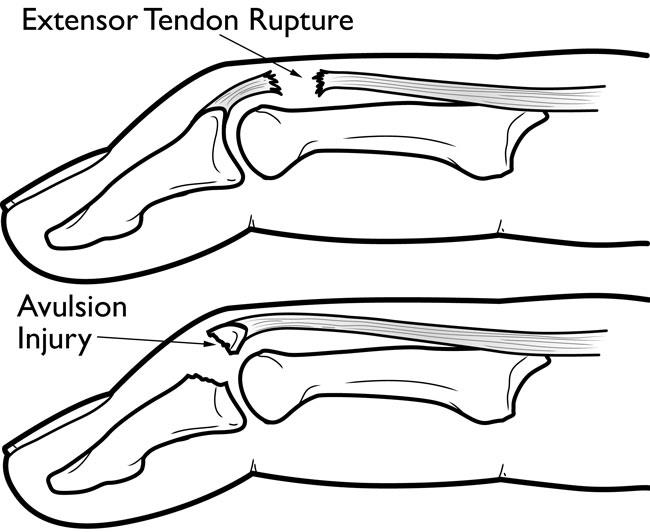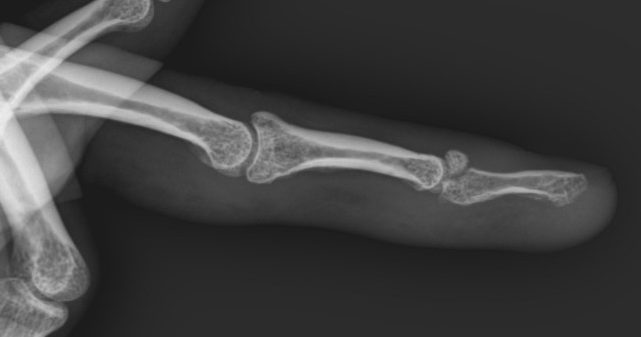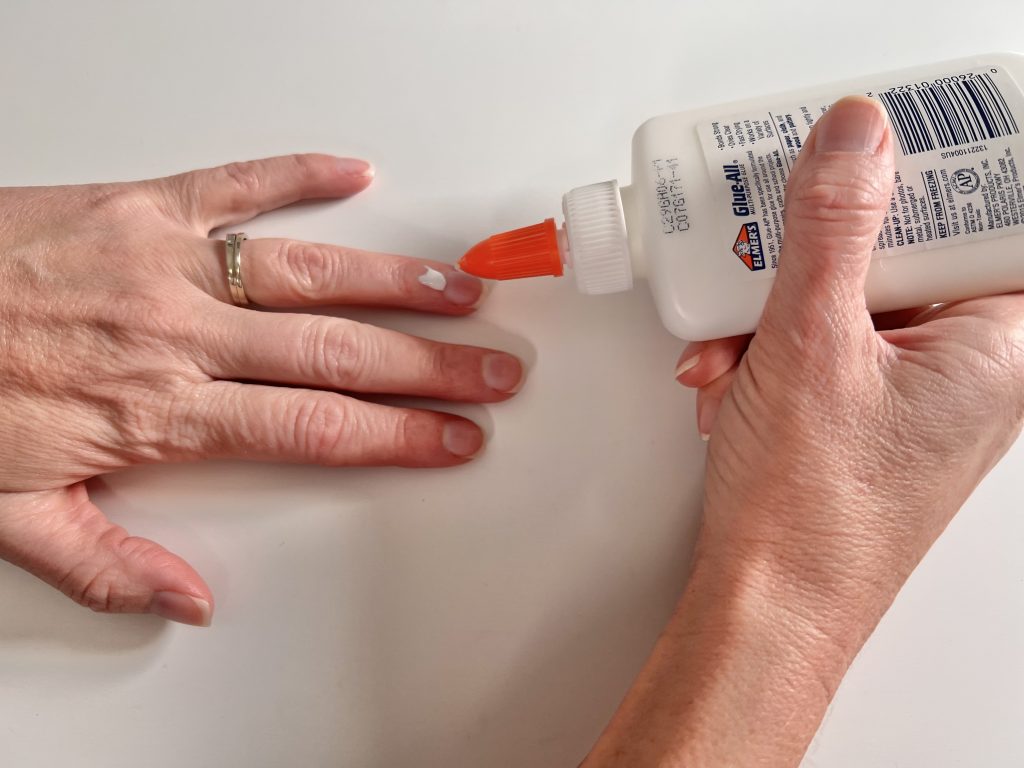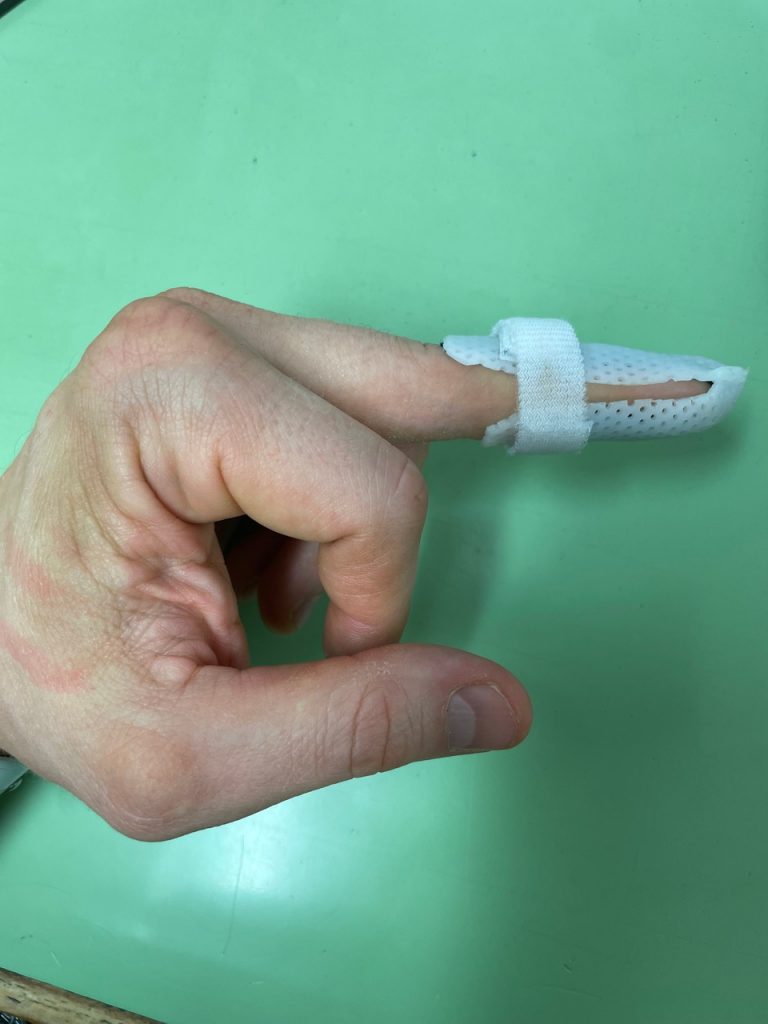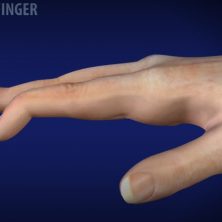A mallet finger injury is a pain.
Not because the injury itself is all that painful, but due to the fact that you aren’t guaranteed it will heal as perfectly as before it was injured.
Just think, you could spend several weeks treating your finger only to find it didn’t heal correctly.
In order to prevent that as much as possible, first you have to understand what a mallet finger injury actually means.
I’ll break that down for you so you can get on the right track from the beginning.
Here’s what you need to know.
A mallet finger injury happens when the extensor tendon in your finger gets damaged or injured. This tendon is responsible for straightening the tip of your finger.
But when it’s injured, usually due to a cut, tear, or break, you’ll find it impossible to lift the tip of your finger straight.
Bony Mallet versus Tendon Mallet Finger Injury
Let’s dive into the two types of mallet finger injuries: bony and tendinous.
Picture this: a small piece of the bone gets torn off your fingertip (aka your distal phalanx). Ouch! This is what’s known as a bony mallet finger.
These are often painful because, technically, you broke the tip of your finger. Unfortunately, you’ll also experience swelling and sensitivity.
But here’s the silver lining – if you had to choose, this is the better one to deal with.
Why?
Because bone heals to bone easier and faster.
Normally, you’re advised by your doctor to wear a splint for 6 weeks. This keeps your bony fingertip straight and allows your fractured bone to heal correctly.
Next, let’s discuss the tendinous mallet finger.
In this case, your tendon is completely pulled off the bone, without a fracture.
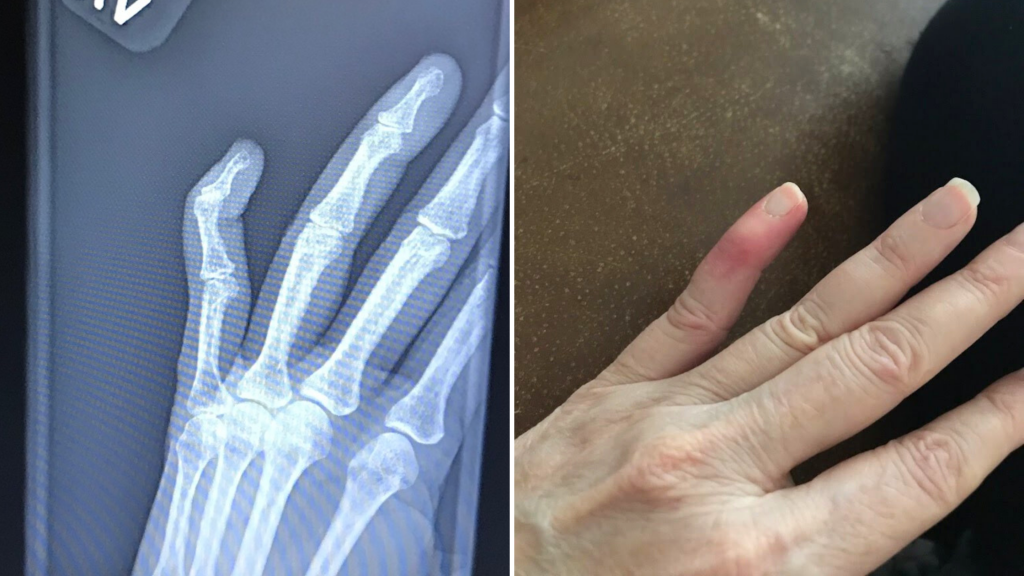
Picture of a tendinous mallet finger injury. No fracture is seen on x-ray.
The good news is you may experience minimal to no pain at all. Some people only realize they’ve injured their finger when they glance down at it – talk about a surprise!
However, the tendinous type doesn’t win the prize for being the best of mallet fingers.
Healing your tendon to bone is a long process and can be quite frustrating. Instead of bone-to-bone healing, your tendon relies on scar tissue build-up.
Imagine glue holding things together.
Your body produces scar tissue, acting like glue, to help the tendon stick back to the bone.
But here’s the catch – you need to wear your splint religiously for a full eight weeks, sometimes longer, if you want that magic to happen.
What causes a Mallet Finger Injury?
Now that we know what a mallet finger injury is and the different types, let’s talk about what causes it.
More often than not, this injury happens when your fingertip gets hit or bent in a way it shouldn’t be bent.
This can occur with sports such as volleyball or basketball when your fingertip gets hit directly by a ball.
Or it can be a very minor activity such as scrubbing your kitchen floors and your fingertip slips off the sponge and hits the wall.
Sometimes, a laceration to the back of your finger can cut your tendon, also leading to a mallet finger injury.
Regardless, the most common cause is a direct trauma, like when someone or something strikes your finger when it’s straight. This can over flex your finger in a not-so-fun way, resulting in a ruptured extensor tendon.
How to Treat a Mallet Finger Injury
Okay, now you know what a mallet finger injury is and how it happens. But how do you treat it?
The go-to treatment for a mallet finger injury is splinting.
Not acupuncture, lotions, or chiropractic mobilizations…just splinting.
The 24/7 support from a splint will allow your bone or tendon to heal and rest.
Your injured finger will be snugly placed in a splint for a period of 6-8 weeks. As mentioned above, if you’re dealing with a bony mallet, 6 weeks is usually the norm.
However, if you have a tendinous mallet, you might be looking at 8 weeks or longer.
One thing I don’t recommend is waiting to seek treatment. Because ignoring your mallet finger will likely mean wearing your splint for 12+ weeks. Or worse, wait too long, and you’ll be left with a permanent finger deformity.
In some cases, if the bone fragment in a bony mallet finger is too big, surgery might be necessary.
Surgeons may opt for a pin to hold the bone in place until it’s fully healed. But don’t worry, surgery isn’t always the go-to solution.
Additional treatment in conjunction with splinting includes exercises to your uninvolved joints to prevent unnecessary stiffness, education on safe and supported removal of your splint, skin checks, and more.
Conclusion:
Always make sure you see a hand doctor to determine which type of mallet finger injury you have. Not only will you understand the healing process but you’ll also get a better ballpark time frame for wearing your splint.
With the right treatment and a pinch of patience, you’ll be back to using your hand in no time.
If you want to learn more about how to treat your mallet finger injury and get the best results, be sure to join my Mallet Finger Treatment program. The only step by step self treatment program designed by a hand therapist.


